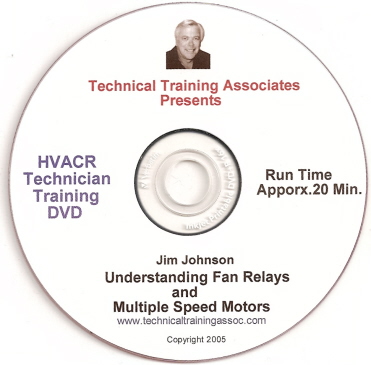Discomfort Roulette
This large, popular casino, which was refurbished and reopened in May of 1996, features 140 sq ft of gaming space, housing 16 gaming tables, and over 1,500 slot machines. The casino also includes 500 guestrooms, three world-class restaurants, an 11,000-sq-ft ballroom, a 20,000-sq-ft exhibit hall, and many other amenities.The facility's 3,000-ton chiller plant, comprised of three 1,000-ton York Millennium YK centrifugal machines charged with HFC-134a, is owned and managed by Conectiv Thermal Systems, a district energy company which is a subsidiary of Conectiv, based in Wilmington, DE.
Conectiv supplies both chilled water and steam to the facility, according to Frank DiCola, Conectiv Thermal's vice president and general manager. The thermal energy provider operates and maintains this satellite plant as part of its 17,000-ton district energy cooling facility that supplies chilled water to casinos such as Trump Plaza, Bally's Park Place, Caesar's Wild Wild West, and Claridge, just to name a few.
Casino comfort control is a very reactive business - one that hinges on cooling equipment that can follow loads and respond quickly to fluctuating temperature requirements. It takes just a 1? change in space temperature to cause discomfort and wanderlust.
A finely tuned and highly responsive climate-conditioning system has a direct impact on the casino's and Conectiv's bottom line, according to DiCola.
"This is a 24-7 business," DiCola asserted. "We need to have the same burning desire to satisfy our customers as they do. Since these casinos are so close to each other, if a customer gets uncomfortable in one establishment, they can just pick up their winnings and move to the casino next door."
Conectiv Plays Variable-speed Card
While the district-energy provider is unable to predict precisely the facility's cooling demand, they have to be ready to respond at a moment's notice."If the casino has a show that's going to start at 8 p.m., depending on the performers, they may have to cool that room off at 7 p.m. or 4 p.m., or sometimes not at all," elaborated Joe Lang, district sales manager at York's Philadelphia office.
Responding to the casino's shifting cooling needs often requires that Conectiv relegate one or more of the plant's chillers to off-design duty, resulting in frequent cycling and inefficient use of the plant's mechanical resources.
"Conectiv has a genuinely vested interest in making sure that the plant is optimized. We were concerned about the number of times we started, cycled, and stopped the chillers," DiCola said.
The prevalence of off-design conditions, low load and/or entering-condenser-water temperatures (ECWTs) motivated Conectiv to explore whether the chiller plant could be operated more efficiently during those conditions.
To evaluate its options, Conectiv performed an extensive engineering study. The analysis, supported by chiller performance modeling data furnished by York, explored a variety of new equipment and retrofit scenarios, including hybrid gas/electric plants and off-peak thermal storage, looking for a solution that provides the most comfort at the least cost.
"We looked at all types of technology, from gas-driven chillers, to a combination of steam-driven turbines and thermal storage. But, based on lessons learned at other regional district-cooling plants and at off-site plants we manage here, having the ability to follow more closely the load of the customer was more advantageous for us," DiCola reasoned.
Based on their past positive experiences with the technology, DiCola and his engineers knew, and the study later confirmed, that variable-speed drive (vsd) chiller control would enable them to take full advantage of reduced loads and lower ECWTs.
Simplicity of York's single-stage compressor design means that vsd operation can be coordinated with the single set of pre-rotation vanes. What's more, open-drive motors eliminate concerns about insufficient refrigerant motor cooling when operating with reduced ECWTs.
The compact water-cooled design of the York vsd allowed it to be mounted directly over the chillers to conserve equipment room space.
Conectiv Cashes in Payback Chips
Conectiv is always searching for technologies that will give it the ability to respond to customers' cooling profiles in the most economical way. In addition to better load following, combining York vsd chillers and Conectiv's VariChill controls have resulted in greater overall plant efficiency and optimized energy use.Based on actual savings garnered from the use of York drive technology at the site and at its off-site locations, DiCola projects that the technology allows them to maximize their return on investment (ROI).
When lower ECWTs are available, energy consumption of the vsd-outfitted chiller has gone down as low as 0.21 kW/ton. Thus far, the Integrated Part-Load Value Power (IPLV) consumption is 0.581kW/ton for the retrofitted machine, vs. 0.656 kW/ton IPLV on the non-vsd chiller. Also, with more than a year's worth of actual operating data on tap, the retrofitted chiller's energy usage has declined by more than 158,000 kWh, DiCola reported.
The chiller upgrade cost $87,000. Based on actual annual dollar savings of $31,142/yr garnered since the project went on-line, Conectiv should recoup its investment in two to three years. Furthermore, DiCola projects that the retrofit will capture a 36% return on investment, 16% better than Conectiv's minimum internal ROI hurdle.
In the high-risk game of district chiller operation and maintenance, variable-speed technology stacks the odds in Conectiv's favor to better manage varying demands and energy costs.








